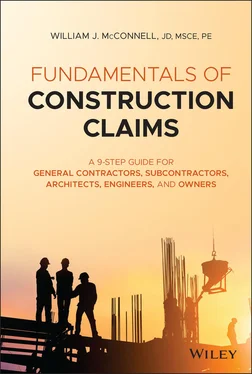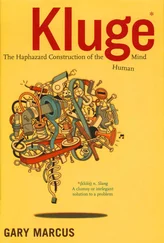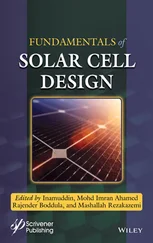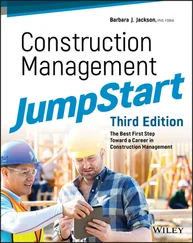VI. Step 6: Calculate Damages
Once entitlement is established and the delay is calculated (if applicable), the claimant can move on to damages. The five main types of damages are:
1 scope change damages;
2 productivity damages;
3 acceleration damages;
4 delay damages;
5 consequential damages.
Depending on what cost information exists, damages for the first four categories may be calculated by one of four methods:
1 actual cost method;
2 agreed upon cost method;
3 estimated cost method;
4 modified total cost method.
Consequential damages relate to costs not associated with on-site project activity, such as home office overhead, loss of bonding capacity, and lost profits. Consequential damages are often mutually waived in contracts and are not subject to markups.
VII. Step 7: Formatting and Packaging the Claim
The next step involves the packaging of the claim such that it is presented in an organized and clear fashion and it includes all the necessary backup for the reader to reference. Claims that are properly packaged have a much better chance of being resolved in a timely fashion and before binding dispute resolution is required, which saves time and costs for all parties. Chapter 8will review how claims can be packaged in order to put the claimant in the best position to resolve the dispute.
VIII. Step 8: Non-Binding Dispute Resolution
Standard construction contracts require non-binding dispute resolution such as settlement meetings at the project level, settlement meeting with decision makers, and formal mediation. Chapter 9discusses best practices with regards to managing these non-binding forums. If the parties are interested in settling the dispute and the right mediator is in place, most disputes are settled.
IX. Step 9: Binding Dispute Resolution
If the non-binding dispute resolution process fails, the claimant is left with a binding dispute resolution to resolve the dispute, which is in the form of litigation or arbitration, depending on what the subject contract stipulates. Binding dispute resolution is time-consuming and costly, so the claimant should go into this process with eyes wide open. Chapter 10discusses best practices in terms of litigating or arbitrating a construction dispute.
This book also includes additional chapters to address other important topics related to construction claims, such as termination claims, non-contract claims, and allocation of damages.
Termination claims are worthy of a separate chapter because termination is the most severe remedy provided to the parties to the contract and standard construction contract forms define when and how one party can terminate the other party to the contract and what damages are recoverable in the event of a proper termination. Thus, termination clauses are often self-contained in terms of entitlement, procedure, and damages. Chapter 11reviews these standard provisions and provides examples of both proper and improper terminations.
While this book is focused on contract claims, many of the concepts noted herein also apply to tort claims. Tort claims are non-contract claims that arise when one party has a duty to other foreseeable parties, and when this duty is breached, and it results in damage, monetary damages and/or performance are owed. An example tort claim related to a construction project is when a Homeowners Association (HOA) sues developers, design firms, contractors, subcontractors, and vendors due to design and construction elements that fall below the requisite standard of care, even though no contract exists between these parties and the HOA. State statutes and state case law typically define tort law doctrine and remedies. In order to establish duties in a tort claim, “standard of care” experts are often retained by the parties that opine on which duties are owed and if conduct met or fell below the requisite standard of care. Some of the information in Chapter 12applies to tort claims, such as damage calculations, and fault allocation is covered in Chapter 13. Other non-contract claims are highlighted as well, including: (1) quantum meruit; (2) unjust enrichment; (3) negligence; (4) breach of warranty; and (5) mechanic's lien claims. It is important for claimants and respondents to be familiar with these claims as they often arise during binding dispute resolution.
If a claim involves one or more parties, the claimant or respondent may need to allocate fault amongst the parties to properly apportion claimed damages. For instance, if an owner has an administrative claim regarding lack of clean-up by both the contractor and a separate contractor on site, the owner must properly allocate the damages between the parties. As discussed in detail in Chapter 13, this process involves a five-step approach: (1) defining the issue; (2) duties; (3) patent or latent in nature; (4) was there a cover-up?; and (5) responsibility.
The aim of this book is to assist all parties to a construction project with the dispute resolution process. When the parties understand the dispute resolution process and can properly prepare and evaluate claims during the course of the project, there is a higher likelihood for the dispute to be resolved in a timely fashion and well before binding dispute resolution, which is when significant legal and expert fees are incurred by the parties. Moreover, if a dispute ends up being resolved in a binding dispute resolution format, the party that previously prepared or rebutted the claim in a reasonable fashion during the design and construction of the project will likely be placed in a favorable position during the trial or arbitration.
2 Step 1: Review the Dispute Resolution Procedure
The first step in the claims process is for the claimant to begin with the end in mind. While it is preferred for the claimant to negotiate a reasonable settlement with the respondent well before the binding dispute resolution process is initiated, it is important for the claimant to understand the overall pathway for dispute resolution up front, rather than learn about it along the way—which is too often the case and this can be a costly learning curve. For one thing, an understanding of the overall dispute resolution process allows claimants and respondents to make sound business decisions before the resolution process incurs significant legal, expert, and mediator/arbitrator/court fees. In addition, if the claimant deems the respondent to be irrational, they might decide to expedite the process toward binding dispute resolution.
Nearly all contract agreements that relate to a construction project define the dispute resolution procedures. The construction industry uses either standard or proprietary contract forms. Most agreements related to private construction work use standard contract forms, while most public improvement projects use proprietary contract forms. The three most common standard contract forms that can be purchased online are published by: (1) the American Institute of Architects (AIA), which are primarily used for building projects; 1 (2) the Engineers Joint Contract Documents Committee (EJCDC); 2 which are generally used for horizontal infrastructure projects; and (3) ConsensusDocs 3 that are applicable for both horizontal or vertical construction projects.
Most federal, state, and local agencies use proprietary contract forms that are designed to address specific project types and regulatory requirements. For federal agency work, the dispute resolution procedures follow Federal Acquisition Regulation (FAR) requirements. State and local agencies stipulate dispute resolution requirements based on preference. Certain private owners also use proprietary contracts forms, particularly those that let a large volume of construction work.
Читать дальше












